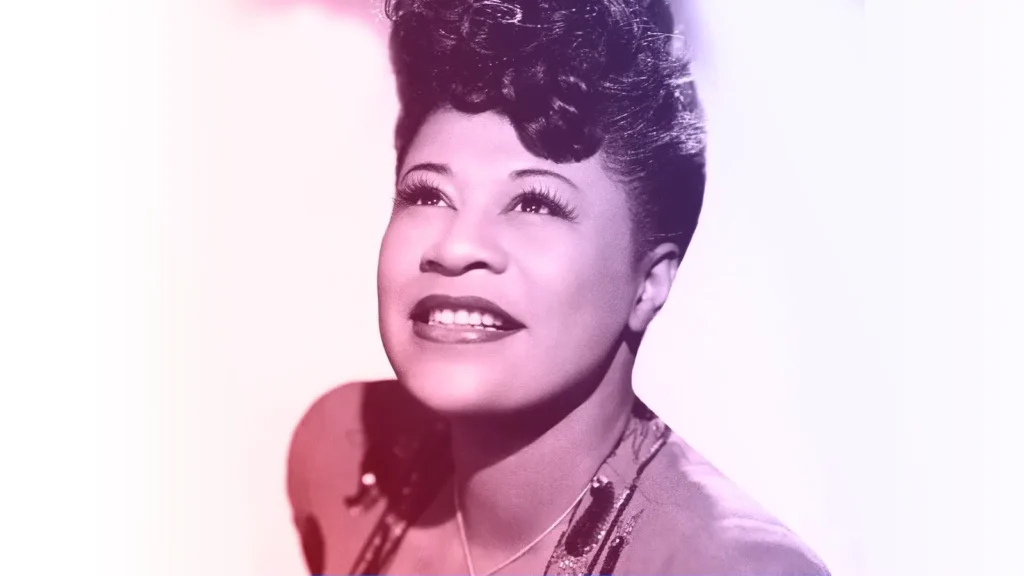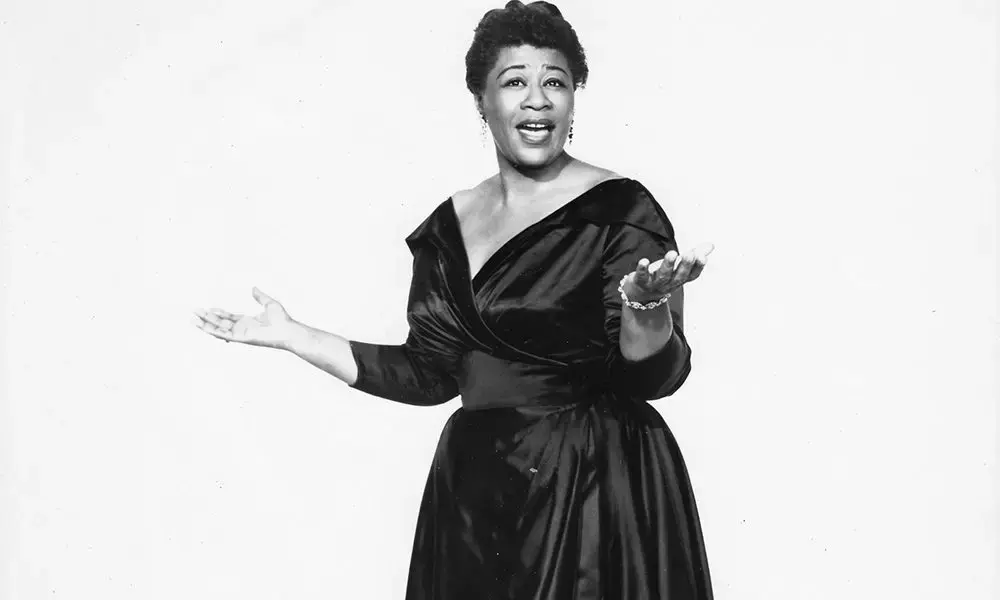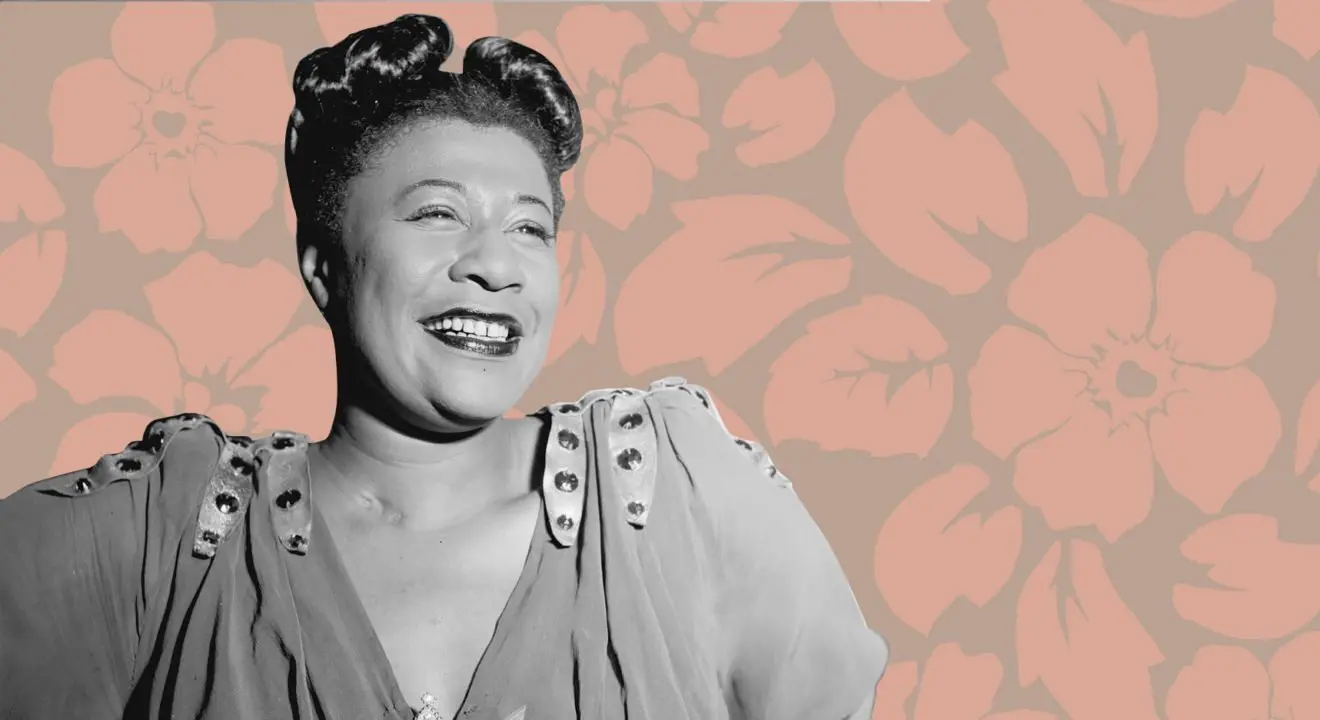Ella Fitzgerald, hailed as “The First Lady of Song,” was born on April 25, 1917, in Newport News, Virginia. Her unparalleled contribution to jazz and popular music has left an indelible mark on the cultural landscape. Overcoming numerous challenges in her early life, Fitzgerald’s musical journey took flight in the vibrant neighborhoods of Harlem. From her groundbreaking performance at the Apollo Theater at the age of 17 to her legacy as a scat singing virtuoso, Ella Fitzgerald’s life story is one of resilience, talent, and enduring influence.
Early Life and Challenges
Ella Fitzgerald’s journey began in Newport News, Virginia, where she was born on April 25, 1917. However, tragedy struck early in her life with the death of her mother in 1932. This heartbreaking loss led the young Fitzgerald to relocate to Harlem, finding solace and support with her aunt. The subsequent years were marked by struggles, including a period of skipping school and time in reform school.
Despite these hardships, Fitzgerald’s undeniable talent emerged during her formative years. Her musical roots can be traced back to her local church in Harlem, where she started singing during elementary school. This early exposure laid the foundation for a remarkable career that would span over half a century.

Rise to Stardom
Ella Fitzgerald’s ascent to stardom was meteoric, with a pivotal moment occurring at the Apollo Theater when she was just 17. Her performance not only captivated the audience but also marked the beginning of a career that would redefine the landscape of jazz. Blessed with a voice that resembled an instrument in its tonal precision, Fitzgerald quickly gained fame for her smooth tones.
In the 1930s, Fitzgerald’s popularity soared as she joined drummer Chick Webb’s band, making a name for herself with hits like “A-Tisket, A-Tasket.” Following Webb’s death in 1939, Fitzgerald assumed leadership of the band, which was subsequently renamed “Ella Fitzgerald and Her Famous Orchestra.” This transition showcased her versatility and leadership skills, setting the stage for her peak years in the 1950s and 1960s.
Musical Legacy
Ella Fitzgerald’s musical legacy is etched in history through her extensive discography, which spans diverse styles such as Bop, Standards, Swing, Traditional Pop, and Vocal Jazz. One of her iconic collaborations was with Norman Granz and the Verve label in the 1950s, resulting in legendary “Songbooks” albums. These albums showcased her interpretative prowess, bringing to life the works of Great American Songbook composers.
Fitzgerald’s impact on jazz and popular music is immeasurable. She not only pioneered scat singing but also experimented with bebop, solidifying her status as a trailblazer in the genre. Throughout her career, she recorded over 200 albums, featuring more than 2,000 songs and selling over 40 million albums globally. Her ability to seamlessly navigate various musical styles and her distinctive scatting technique distinguish her as one of the greatest jazz vocalists in history.

Personal Life
Marriages and Family
Ella Fitzgerald’s personal life was marked by two marriages. The first, to Benny Kornegay, was annulled in 1942. Her second marriage was to bass player Ray Brown, a union that faced challenges due to their demanding musical careers, ultimately leading to a divorce in 1953. Despite these personal trials, Fitzgerald’s dedication to her craft remained unwavering.
Health Challenges
Fitzgerald battled health issues, including diabetes, which eventually led to a leg amputation. Despite these challenges, she continued to perform until her last show in 1991. Her tenacity and commitment to her art, even in the face of health setbacks, underscored her status as a true professional and a symbol of resilience.
Awards and Honors
Ella Fitzgerald’s remarkable contributions to the world of music were acknowledged with numerous awards and honors. In 1958, she made history by becoming the first African American woman to win a Grammy Award. This was just the beginning of an illustrious career that saw her receive a total of 13 Grammy Awards over the years.
In 1967, Fitzgerald was honored with a Grammy Lifetime Achievement Award, recognizing her enduring impact on the jazz genre. Her contributions to the arts were further acknowledged in 1987 when she received the National Medal of Art. These accolades only scratched the surface of her achievements, highlighting her unparalleled influence and the respect she garnered within the industry.
Legacy and Influence
Ella Fitzgerald’s legacy extends far beyond her musical achievements. She remains a household name globally, with her impact on jazz and popular music continuing to resonate. In 1992, Fitzgerald received the Presidential Medal of Freedom, cementing her status as a cultural icon.
Her influence on future generations of musicians is immeasurable, and her legacy is perpetuated through posthumous honors, including the establishment of the Ella Fitzgerald Charitable Foundation in 1993. This foundation reflects her commitment to giving back and supporting causes close to her heart.

Frequently Asked Questions
Did Ella Fitzgerald have a family?
Yes, Ella Fitzgerald was married twice. Her first marriage was to Benny Kornegay, annulled in 1942. She later married bass player Ray Brown, with whom she faced challenges due to their busy musical careers, leading to a divorce in 1953.
What were Ella Fitzgerald’s major awards?
Ella Fitzgerald made history by becoming the first African American woman to win a Grammy Award in 1958. She went on to receive a total of 13 Grammy Awards, a Grammy Lifetime Achievement Award in 1967, and the National Medal of Art in 1987.
How did she contribute to civil rights?
While not explicitly a civil rights activist, Fitzgerald used her platform to challenge racial discrimination. She faced segregation and discrimination despite her success, and her influence on breaking racial barriers in the music industry is part of her lasting legacy.
What is Fitzgerald’s lasting legacy?
Fitzgerald’s legacy lies in her groundbreaking contributions to jazz, her pioneering work in scat singing, and her versatility as a vocalist. She continues to be celebrated globally, and her impact on the music industry remains influential.










